Life and basic science at the Nobel Prize winners
It is evident that life and living beings generate a great curiosity. And this curiosity is reflected every year in the Nobel Prize. This year's edition will be no exception, two of the three science awards have to do with physiology.
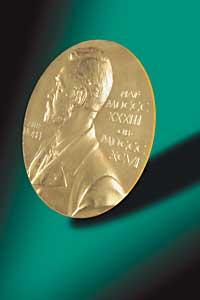
On the one hand, through the Nobel Prize in Medicine or Physiology, they wanted to honor those who investigated the functioning of the smell. In this paper, the communication between the nose and the brain has been analyzed, which means that the researchers have had to analyze the coordination between very diverse systems. The nasal system is based on the function of receptors, in short, of proteins. That is, it is an investigation of molecules. On the contrary, to understand the brain system, they have had to analyze the organization of the entire organ to know how we fix odors in memory.
On the other hand, through the Chemistry Novel, an extensive field research will be awarded. The study explained how controlled degradation of proteins occurs. And research is broad because all intracellular proteins are broken down through this process.
To meet the needs of the cell, proteins are needed, not any protein, but a specific protein in each case. When this need for a cell is saturated, the proteins are left over and must be eliminated, but only those that are left over. This selective removal is a very important process within the cell, since if the proteins are not properly removed, they continue to work when they are not necessary. Therefore, the Nobel Foundation wants to reward those who investigated all this.
But this year's Nobel Prizes will not only reward life. In the field of physics, they have remembered the basic research of science. It may not make sense to ask what this research serves. Not all investigations have direct application. What are they for? Just to know it. And it is not little. To reassure lovers of applications, it can be said that within fifty years they can look for some use. But if that does not happen, it is worth rewarding. Knowing is always beneficial.
In fact, the winners of this year's Nobel Prize in Physics analyzed violent nuclear force from a theoretical point of view. This force has greater influence on the quarke, that is, on the elementary particles of matter. What is it for research? Well, simply to receive the Nobel Prize.
Nobel Prize in Chemistry: protein degradation
By studying the cycle of ubiquitine in controlled degradation of proteins


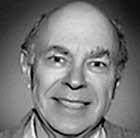
The cell continues to synthesize and eliminate proteins and these two processes are produced at high speed. They are very controlled processes: the cell synthesizes only the necessary proteins and removes only those that do not need them. The synthesis of proteins aroused great interest in biochemicals from the beginning, but the elimination of proteins was not studied by many. This year's Nobel Prize in Chemistry will be awarded to those who discovered how elimination occurs.
The elimination of proteins is produced through a molecular cycle. This molecule is also a small protein that can be marine for any other protein: ubiquitine. And it is the trick that uses the cell to mark the proteins to be removed: any protein that has adhered ubiquitine will reduce the cell.
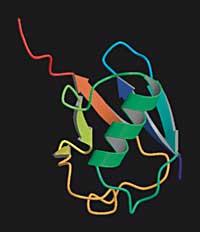
To do this, it introduces proteosoma into a structure called proteosoma. Proteosome is a structure composed of many other proteins, within which two processes are given: on the one hand, the cell reduces the protein marked and on the other, recovers the adhered ubiquitine. The cell recovers ubiquitine for reuse as a marker. In this way the cycle is closed.
The operation of this cycle is fundamental for the cell. It should be taken into account that by degradation of the protein amino acids are obtained which can be used in other processes. Therefore, the cell also recycles amino acids.
In short, the functioning of the cell is a chain of cycles. For example, if protein production and removal fails, the balance can break and serious diseases can appear. In some cases, cancer has also been caused by problems in the ubiquitine cycle.
Nobel Prize in Physics: the world of quarks closer
For proposing the theory of asymptotic freedom of violent nuclear force
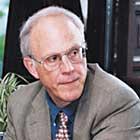
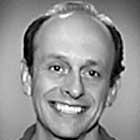

It is not any skill the work done by the three researchers. The jury has pointed out that it has been fundamental to understand one of the most important forces of nature: strong nuclear force. This force maintains the convergence of quarks in subatomic particles and it was not clear why they do not move away.
Quarks are elementary particles of matter, formed by any object of nature, as well as protons within the nucleus. Despite its abundance, it was difficult to understand the interaction between quarks. In the 1970s David Gross, David Politzer and Frank Wilcz gave a theoretical explanation to this problem: the quarks are locked in tiny spaces because the force that unites them does not allow them to move away.

According to the mathematical calculations of the three researchers, as the distance between quarks increases, the interaction between them also becomes evident. At first it seemed a contradiction, since it was to be expected that the interaction in small distances was easier, but the award-winning researchers pointed out that the opposite: the closer, the freer the quarks are. Therefore, in very close cases the interaction is practically inappreciable, they behave as if they were free.
Therefore, the phenomenon was called "asymptotic freedom" and has meant a very important step for the oldest project of physics: to unify all kinds of forces of nature into a single system of equations. Five are the basic forces of nature: electric, magnetic, gravitational and weak and violent nuclear force. Each of them influences a certain level of matter. If all forces were to be unified and expressed with a single system of equations, we could understand nature with a simpler language.
The most obvious thing for us is gravity. The planets and galaxies themselves move by that force and, of course, by the macroscopic objects of our environment. But the rest of forces are distinguished in the most basic levels of matter. For example, the electrical force intervenes in the interaction between electrons and protons within the atom, so it channels the reactions between atoms and molecules.
The investigations awarded this year with the Novel have analyzed the forces that are manifested in even smaller levels, and have been necessary in this project of unification of all types of natural forces.
Medical novel for illuminating the path in the labyrinth of smell
For research work on olfactory receptors and olfactory system organization

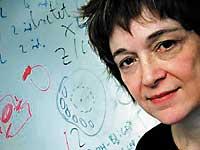
Despite having done many previous studies on smell, they still did not know how we distinguish and remember 10,000 smells. Axel and Buck have worked on it and have seen that a family of genes of about a thousand genes encodes many other types of olfactory receptors. In addition, they have found that the cells containing these receptors are found in the upper part of the nasal epithelium and are those that detect inhaled odorous molecules.
Each olfactory cell has a single type of smell receptor and each receptor can only detect certain odorous substances. Therefore, olfactory cells are specific to a few odors. Once the smell has been detected, the nerve signals are sent to specific, glomerular microzones. These glomeruli are found in the olfactory bulb of the brain, which is the main nucleus associated with smell.
Of the glomeruli, the information is extracted to other places in the brain, where the information of different olfactory receptors is collected and a model is generated. This allows us to remember the smell of a flower flavoured in spring at any other time.
Model of each smell
Knowing what is the mechanism of the olfactory system is the cost of many years of work. Richard Axel and Linda Buck jointly published in their basic research the family of genes that encode olfactory receptors. Year 1991. Since then, each has worked on his own in parallel research and have solved several mysteries of smell, both at molecular level and in cellular organization.
The olfactory system is the first direction illuminated by molecular techniques. These techniques have shown that each olfactory receptor activated by an olorous molecule activates a G-protein in the brain. The G-protein generates a cAMP messenger molecule that opens the ions channels of brain cells. Therefore, the cell is activated.
Olfactory receptors are proteins, all similar, but with details that differentiate them. This explains why they are activated with olorous molecules and others with others. Each receptor is formed by a chain of amino acids which consists of seven ‘stitches’ to the cell membrane. In this way, it forms a pocket in which the odorous molecule enters. When this occurs, the aspect of the receptor changes, so the protein G is activated.






